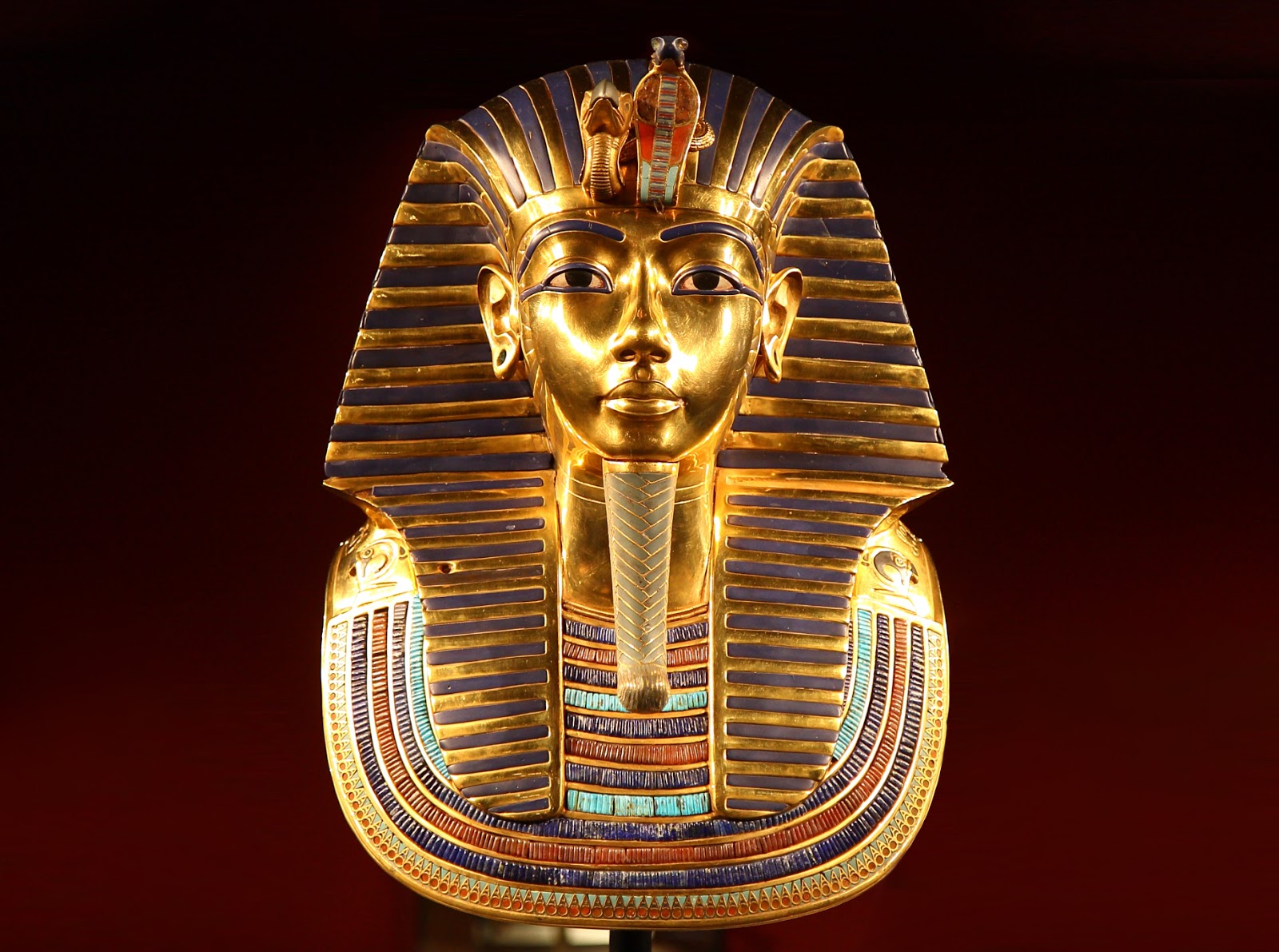Anonymous: The funerary mask of Tutankhamun (1332-1323 BC)
(Museum of Egyptian Antiquities, Cairo, Egypt)
One of the best known historical objects in the world. This mask comes from the tomb of pharaoh Tutankhamun (called KV62) in the valley of the kings in Egypt and was placed directly over the head of the king’s mummy. Tutankhamun is shown with the nemes headcloth, a ceremonial beard of a god and an uraeus (a rearing cobra) and vulture on his brow. The cobra and vulture represent the goddesses Nekhbet - the patron goddess of Upper Egypt (the vulture) and Wadjet - the patron goddess of Lower Egypt (the cobra). These are protective deities which protect the king from harm and are also called 'the two ladies' in the official names of Egyptian pharaohs. Egyptian kings called themselves the 'Son of Re' and this mask shows Tutankhamun as the god Re (the Egyptian sungod), linking the king with the gods. The back of the mask is inscribed with a series of spells and texts from the Egyptian Book of the Dead. The mask is made from gold (the 'Flesh of the Gods'), lapis lazuli, colored glass and weighs about 10 kg. Interestingly the mask was NOT originally made for Tutankhamun (almost 80% of the items in the tomb of Tutankhamun was of someone else). When Tutankhamun died artist used a funerary mask of another pharaoh, the name of his predecessor Smenkhkare has been suggested, and cut the face of the mask and remade it. The gold of the part of the face is of lower quality then the rest and the mask is also riveted to the rest. The creation date of the mask is somewhat between 1332-1323 BC.
